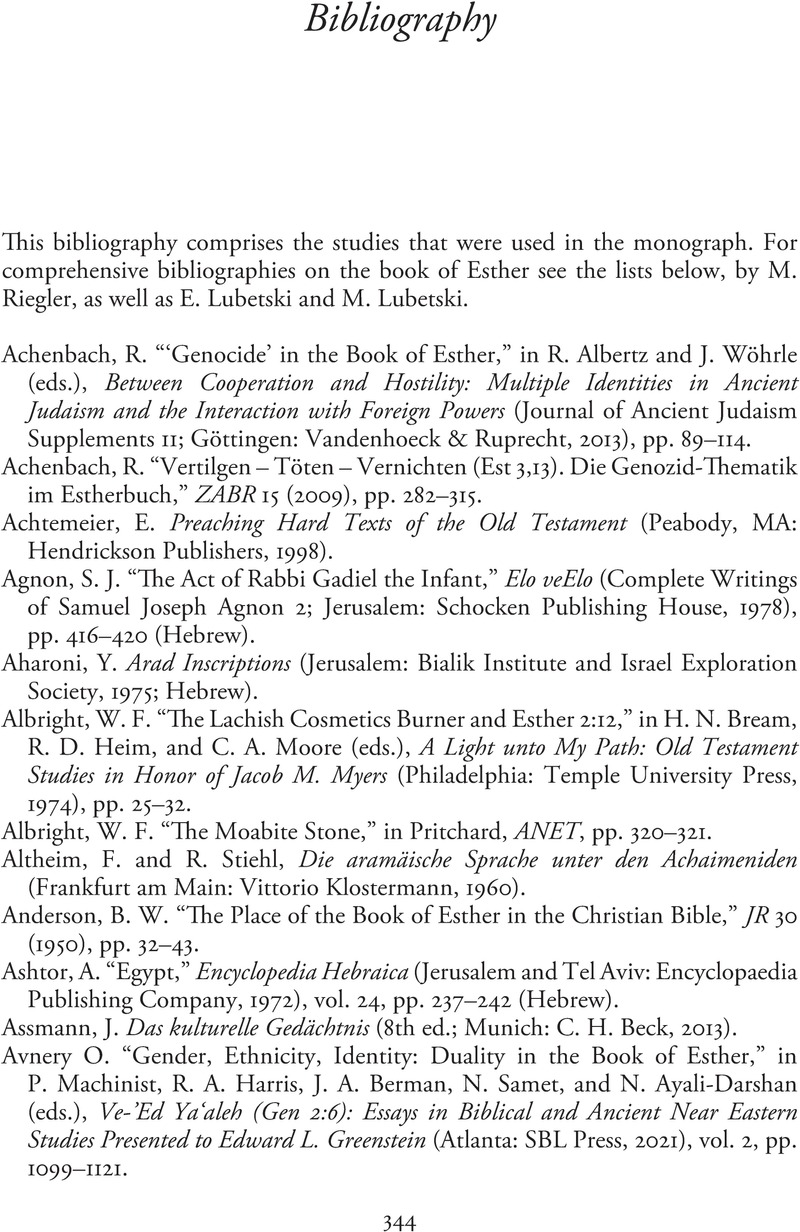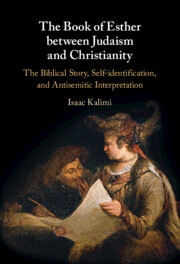Book contents
- The Book of Esther between Judaism and Christianity
- The Book of Esther between Judaism and Christianity
- Copyright page
- Dedication
- Contents
- Figures
- Abbreviations
- Chapter 1 An Introduction
- Part I Esther: Story and History, Literary Features, and Theology
- Part II “Oh, How Much They Love the Book of Esther!”
- Part III Divine or Demon?
- Bibliography
- Authors Index
- Names and Subjects Index
- Sources Index
- Terms and Expressions Index
- References
Bibliography
Published online by Cambridge University Press: 14 July 2023
- The Book of Esther between Judaism and Christianity
- The Book of Esther between Judaism and Christianity
- Copyright page
- Dedication
- Contents
- Figures
- Abbreviations
- Chapter 1 An Introduction
- Part I Esther: Story and History, Literary Features, and Theology
- Part II “Oh, How Much They Love the Book of Esther!”
- Part III Divine or Demon?
- Bibliography
- Authors Index
- Names and Subjects Index
- Sources Index
- Terms and Expressions Index
- References
Summary

- Type
- Chapter
- Information
- The Book of Esther between Judaism and Christianity , pp. 344 - 372Publisher: Cambridge University PressPrint publication year: 2023



